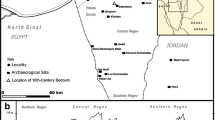Abstract
The Bariba are the dominant ethnic group in the culturally heterogeneous northern provinces of the modern state of Bénin. Recent decades have witnessed dramatic changes in some aspects of Bariba material culture, while others have remained more stable. An investigation of change and stability in Bariba material culture, with particular attention to containers, reveals that the dynamics of cultural pluralism, an heterogeneous array of innovative and conservative beliefs and practices, register as much in the material as in the non-material domains of Bariba life. Because containers are ubiquitous in late prehistoric and historical societies, they constitute a key monitor of change for archaeologists. Evaluation of container change in this living culture highlights some of the challenges facing archaeologists working exclusively with material remains.
Résumé
Les Bariba sont le groupe ethnique qui prédomine dans les provinces culturellement hétérogènes du nord de l'état moderne du Bénin. Pendant les dernières décennies certains aspects de la culture matérielle des Bariba ont changé de façon dramatique, tandis que d'autres sont restés plus stables. Une investigation des changements et de la stabilité dans la culture matérielle des Bariba, avec des recherches spéciales concernant les récipients, révèle que les dynamiques du pluralisme culturel—un étalage hétérogène de croyances et de pratiques innovatrices et conservatrices—sont visibles aussi bien dans les domaines matériels de la vie des Bariba que dans les domaines non-matériels. Puisque les récipients se trouvent partout dans les sociétés historiques et de la fin de la préhistoire, ils constituent pour les archéologues un indice-clef de changements. L'évaluation des changements des récipients dans cette culture vivante met en relief certains des problèmes que doivent affronter les archéologues qui travaillent uniquement sur les vestiges matériels.
Similar content being viewed by others
References
Binford, L. R. 1978.Nunamiut archaeology. New York: Academic Press.
Cornevin, R. 1981.La République Populaire du Bénin. Des origines dahoméenes à nos jours. Paris: Editions G.-P. Maisonneuve & Larose, Académie des Sciences d'Outre-Mer.
David, N. 1971. The Fulani compound and the archaeologist.World Archaeology 3:111–31.
David, N. and Hennig, H. 1972.The ethnography of pottery: a Fulani case seen in archaeological perspective. Addison-Wesley Modular Publications 21. Reading, Mass.
Dunn, F. 1976. Traditional Asian medicine and cosmopolitan medicines as adaptive systems. InAsian medical systems (ed. C. Leslie): pp. 133–58. Berkeley: University of California Press.
Harrell, S. and Dickey, S. A. 1985. Dowry systems in complex societies.Ethnology 24(2):105–20.
Hodder, I. 1982a.Symbols in action: ethnoarchaeological studies of material culture. Cambridge: Cambridge University Press.
Hodder, I. (ed.). 1982b.Symbolic and structural archaeology. Cambridge: Cambridge University Press.
Hopkins, A. G. 1973.An economic history of West Africa. New York: Columbia University Press.
Lombard, J. 1957. Aperçu sur la technologie et l'artisanat Bariba.Etudes Dahoméenes 18:7–55.
Miller, D. 1982. Artefacts as products of human categorisation processes. InSymbolic and structural archaeology (ed. I. Hodder): pp. 17–25.
Nicklin, K. 1971. Stability and innovation in pottery manufacture.World Archaeology 3(1):13–48.
Pastner, C. McC. 1978. The status of women and property on a Baluchistan oasis in Pakistan. InWomen in the Muslim world (eds L. Beck and N. Keddie): pp. 434–50. Cambridge: Harvard University Press.
Raimbault, M. 1980. La poterie traditionnelle au service de l'archéologie: les ateliers de Kalabougou (cercle de Segou, Mali).Bulletin de l'IFAN 42(3):441–74.
Reina, R. E. and Hill, R. M. 1978.Traditional pottery of Guatemala. Austin: University of Texas Press.
Sargent, C. F. 1982.The cultural context of therapeutic choice. Dordrecht: Reidel Publishing Co.
Sargent, C. F. 1985. Witches, merchants and midwives: domains of power among urban Bariba women. InAfrican healing strategies (eds B. du Toit and I. Abdalla): pp. 96–107. Buffalo: Trado-Medic Books.
Suret-Canale, J. 1964.L'Afrique noire. L'ère coloniale. Paris: Editions Sociales.
Yellen, J. 1977.Archaeological approaches to the present. New York: Academic Press.
Rights and permissions
About this article
Cite this article
Sargent, C.F., Friedel, D.A. From clay to metal: culture change and container usage among the Bariba of northern Bénin, West Africa. Afr Archaeol Rev 4, 177–195 (1986). https://doi.org/10.1007/BF01117041
Issue Date:
DOI: https://doi.org/10.1007/BF01117041




